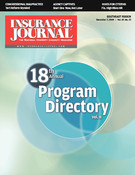Dhananjay Nayakankuppam, a professor of marketing in the Tippie College of Business at the University of Iowa, is an expert in what is known as the contagion effect, an irrational belief that the qualities of something can somehow rub off on a nearby object. For instance, if a coffee mug is broken, the contagion effect suggests that this negative aspect rubs off on other coffee mugs nearby.
In a recently-published study, Nayakankuppam found that the contagion effect also applies to whole groups surrounding the supposedly contagious item; the more contagious the groups were perceived to be, the more easily properties were perceived to spread across the entire group.
Subjects were shown two tables holding nine coffee mugs in boxes and were told that one of the boxes contained a mug with a gift coupon. On one of the tables, the boxes were placed close together, while on the other, they were spaced several inches apart. Participants could choose which table they would like to pick a mug from. “There was a one in 9 chance— an objective probability— of selecting a mug with a gift coupon no matter which table participants chose, so the grouping ought to have had no influence on the preference,” said Nayakankuppam.
Yet, the test subjects consistently selected a mug from the table where the boxes were arranged close together. At the same time, another group was shown two tables of similarly arranged coffee mugs and told one mug was defective and might need to be repaired. This time, the subjects consistently selected from the table where the mugs were spaced further apart.
Nayakankuppam said the results demonstrate that if one object in the group has a gain associated with it, such as a gift coupon, then the gain is perceived to spread through the group of products. People who select from that group feel as if they are increasing their chances of selecting the positive item. On the other hand, loss is also perceived to spread across a contagious group, reducing peoples’ willingness to select an object from that group.
Nayakankuppam’s paper, “The Group-Contagion Effect: The Influence of Spatial Groupings on Perceived Contagion and Preferences,” was co-authored by Arul Mishra and Himanshu Mishra, UI doctoral alumni now teaching at the University of Utah. It was published in the journal Psychological Science.
Nayakankuppam suggests that his research could influence how stores display products or how restaurants list foods on a menu. Las Vegas casinos are said to send bad luck moles to sit next to gamblers on hot streaks to cool them down.
Perhaps Nayakankuppam could turn his research to how the contagion effect applies to tough underwriters who brokers contend see contagion effects everywhere.
Or how does it apply to insurance buyers judged as high risk? They should accept that being in a group with a low credit score and high crash rates or living next to a hurricane zone might make them a higher risk to insurers. But they tend to deny the contagion of these factors, perhaps because the consequence is not a reward but a higher premium or reduced coverage.
Maybe insurers should offer them coffee mugs.
Was this article valuable?
Here are more articles you may enjoy.


 JPMorgan Client Who Lost $50 Million Fortune Faces Court Setback
JPMorgan Client Who Lost $50 Million Fortune Faces Court Setback  Survey Shows Majority of Florida, California Homeowners Seeing Higher Insurance Costs
Survey Shows Majority of Florida, California Homeowners Seeing Higher Insurance Costs  California Sees Two More Property Insurers Withdraw From Market
California Sees Two More Property Insurers Withdraw From Market  4,800 Claims Handled by Unlicensed Adjusters in Florida After Irma, Lawsuit Says
4,800 Claims Handled by Unlicensed Adjusters in Florida After Irma, Lawsuit Says 


